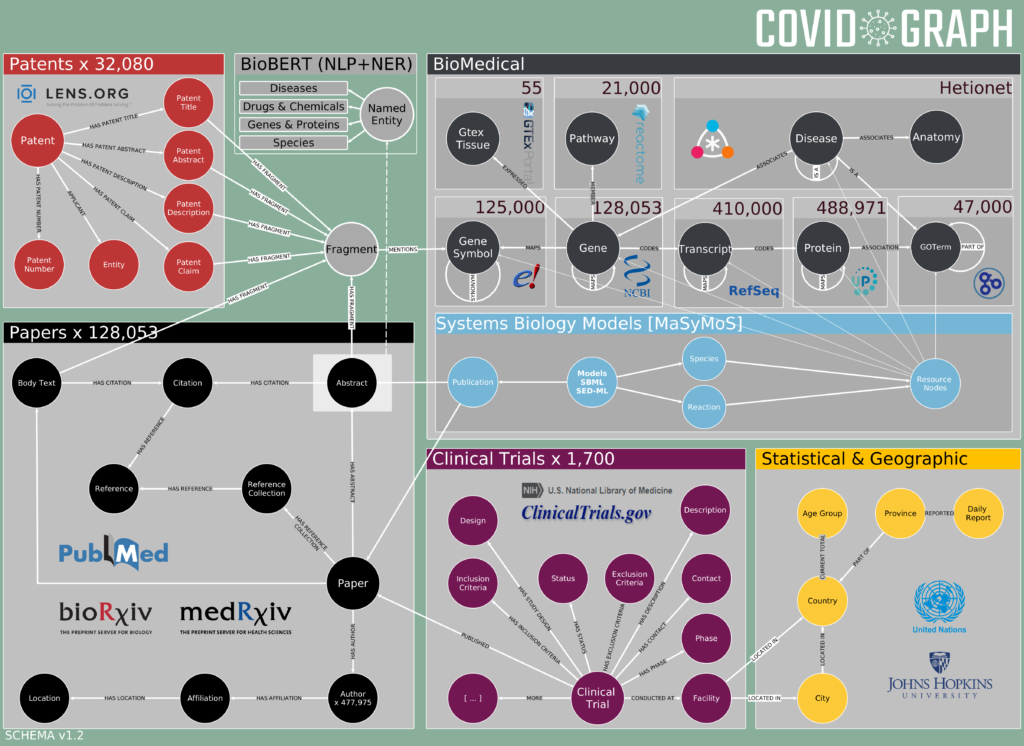
How can Knowledge Graphs improve research in safety and risk assessment?
What is a Knowledge Graph?
The term Knowledge Graph describes a new type of database technology that is applied to store data about a specific domain and to query the database with questions in natural language. This technology was first used by Google to improve search results and is using semantic technologies to process the data. The leading internet companies, such as Google, Facebook, and Amazon have been using Knowledge Graph for several years to present their customers with information tailored to their needs.
However, the technology can be used for your company to map internal knowledge and, for example, to improve search results.
How can Knowledge Graphs be applied in research?
The adoption of Knowledge Graphs in research projects is growing. For example, the COVIDGRAPH project has built up a knowledge base for COVID research.
In our Edelweiss Connect project with clients and consortium partners, we apply Knowledge Graphs to improve the data quality and foster new insights into different domains.
- Connect external knowledge, e.g. relevant literature and new studies, to internal data.
- Connect data from different data silos to gain new insights
- Improve search results for end users
- Knowledge Graphs contribute to the adoption of the FAIR principles
How can Edelweiss Connect help you to improve your Knowledge and Data Management?
- We apply Knowledge Graphs and Graph Data Science to improve the data management
- We help our clients to build trusted data storage solutions, e.g. legally compliant archives for storing data long-term in a secure and immutable way.
- We help to build trusted dataspaces in the domain of toxicological research and safety and risk assessments.
Sources:
Daniel Burgwinkel - Data Science Foundations: Knowledge Graphs